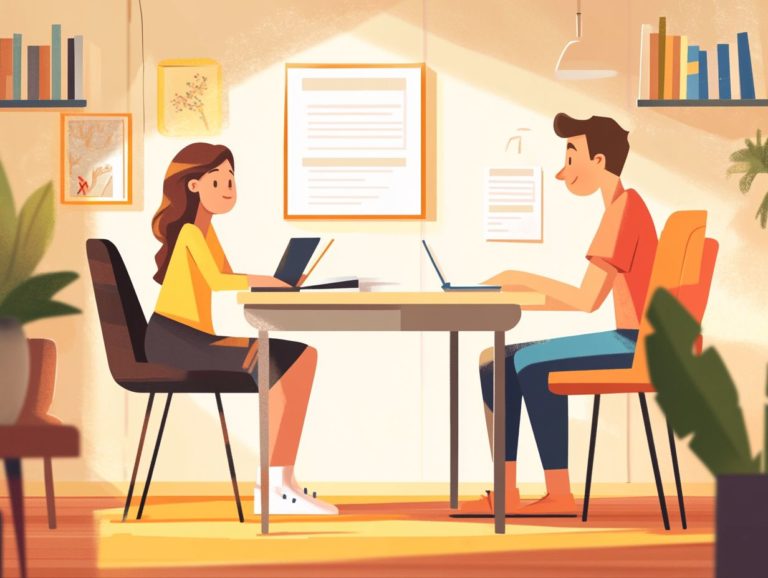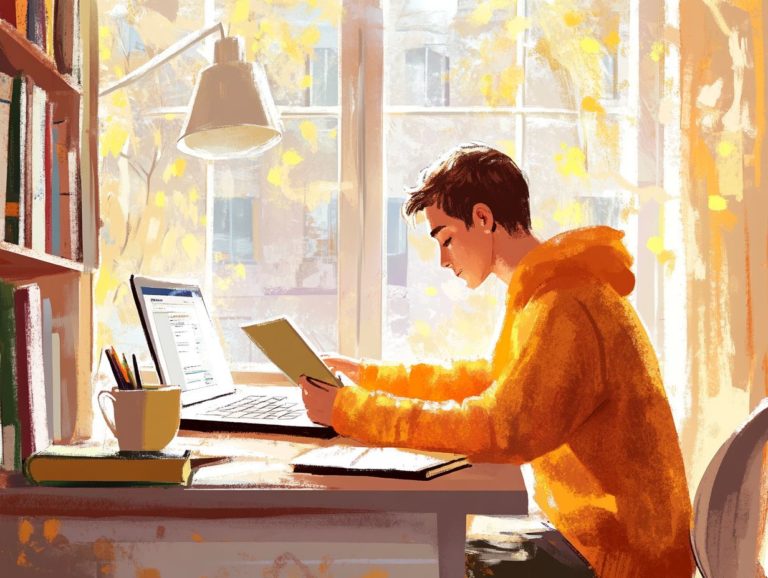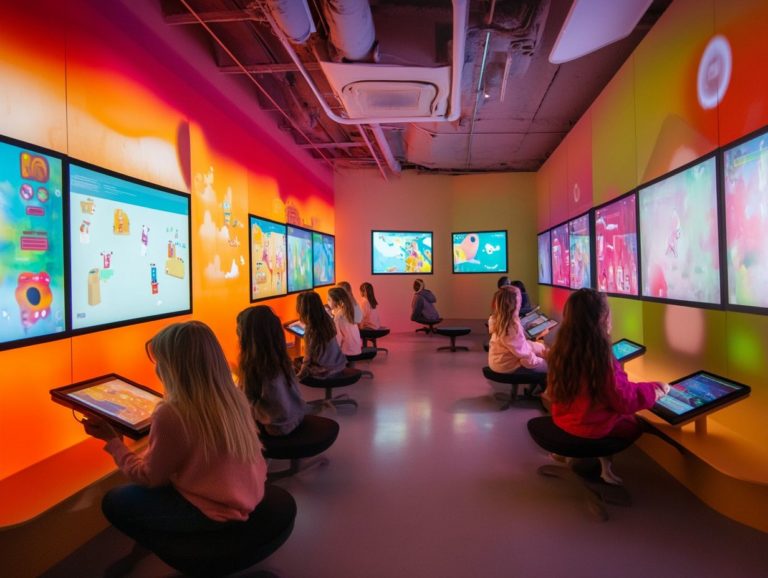How to Foster Creativity in E-Learning Environments
In today s fast-paced digital world, creativity isn t just a nice-to-have; it s an essential pillar of effective e-learning. As education increasingly moves online, you must understand how to nurture creativity within these platforms.
This article explores the importance of creativity for learning success and highlights the barriers that often hinder it.
You ll find practical strategies for fostering innovation through engaging activities, collaboration, and the right tools. It also covers how to measure the impact of creative methods on student engagement.
Jump in now to discover how you can make e-learning exciting and vibrant!
Contents
- Key Takeaways:
- The Importance of Creativity in E-Learning
- Barriers to Creativity in E-Learning
- Strategies for Fostering Creativity in E-Learning
- Tools and Technologies for Enhancing Creativity
- Evaluating the Effectiveness of Creative E-Learning
- Frequently Asked Questions
- 1. How can I foster creativity in e-learning environments?
- 2. What are some benefits of fostering creativity in e-learning environments?
- 3. How can I create a supportive environment for creativity in e-learning?
- 4. How can I incorporate technology to foster creativity in e-learning environments?
- 5. What role do instructors play in fostering creativity in e-learning environments?
- 6. How can I assess and evaluate creativity in e-learning environments?
Key Takeaways:
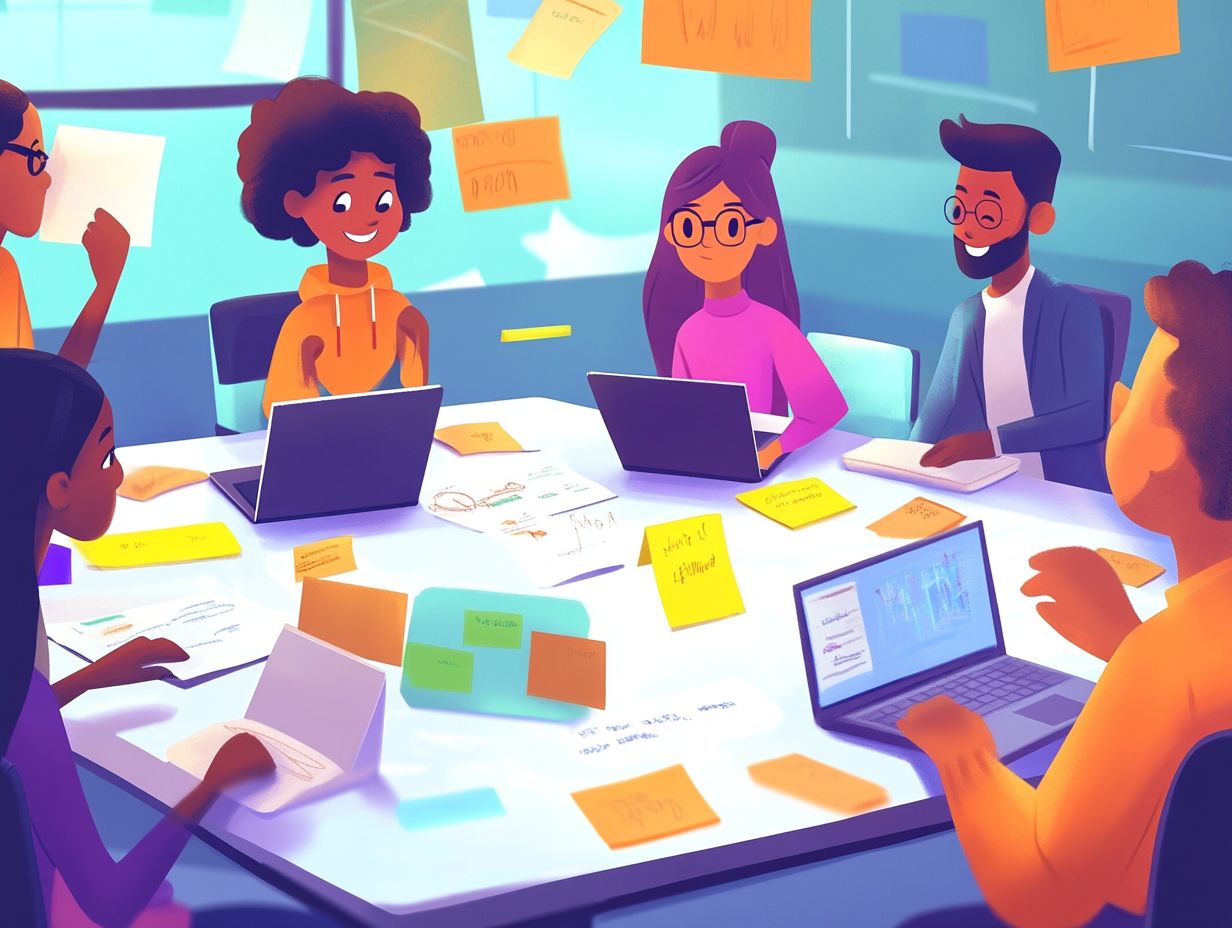
- Creativity enhances e-learning.
- Identify and overcome barriers to creativity, such as limited resources or rigid curriculum.
- Foster creativity by incorporating interactive activities, encouraging divergent thinking, and promoting collaboration and experimentation.
The Importance of Creativity in E-Learning
In today s dynamic educational landscape, the significance of creativity in e-learning is crucial, particularly as you navigate new methodologies like remote learning and project-based learning. By fostering creativity, you can cultivate student-driven learning experiences that enhance critical thinking and problem-solving skills.
This method sparks social-emotional learning, allowing students to engage with cultural understanding through collaboration and flexible seating arrangements.
Furthermore, integrating digital tools into the learning environment enriches these creative processes, promoting a growth mindset and meaningful engagement with the STEAM curriculum.
Why Creativity is Essential for Effective Learning
Creativity plays a crucial role in your learning journey. It captures your interest and sharpens your critical thinking and problem-solving skills, allowing you to tackle complex challenges with a growth mindset.
When you engage in creative activities, you collaborate with others, share ideas, and explore various perspectives. For example, in a group project, you and your peers create a multimedia presentation. This fosters teamwork and enhances your social-emotional learning by promoting empathy and effective communication.
Research from the OECD shows that environments prioritizing creativity lead to better academic outcomes and personal growth. This aligns beautifully with Vygotsky’s theories on the social nature of learning, which stress that you actively construct knowledge through social interaction.
By embracing creativity in your education, you can transform your learning experience, preparing yourself not only for academic success but also for meaningful interactions in life.
Barriers to Creativity in E-Learning
While the benefits of infusing creativity into e-learning are plentiful, certain barriers can impede its effectiveness. This is particularly evident in remote learning settings, where traditional assessment methods and outdated teaching techniques often stifle innovation and diminish student engagement.
Identifying and Overcoming Obstacles
Overcoming obstacles to creativity in remote learning requires a simple plan. Focus on reevaluating assessment strategies and adopting innovative teaching methods that promote engagement and flexibility.
This means recognizing the limitations of traditional evaluation methods and incorporating adaptive techniques that resonate with diverse learners. For example, leverage tools like Flipgrid, which allow students to express their thoughts through video discussions, fostering a sense of community and encouraging creative expression.
Platforms such as Classcraft turn learning into an interactive adventure, motivating students to engage actively while honing their critical problem-solving skills. By embracing these dynamic assessment strategies, you can cultivate a stimulating environment where creativity flourishes, even amidst the challenges of remote learning.
Strategies for Fostering Creativity in E-Learning
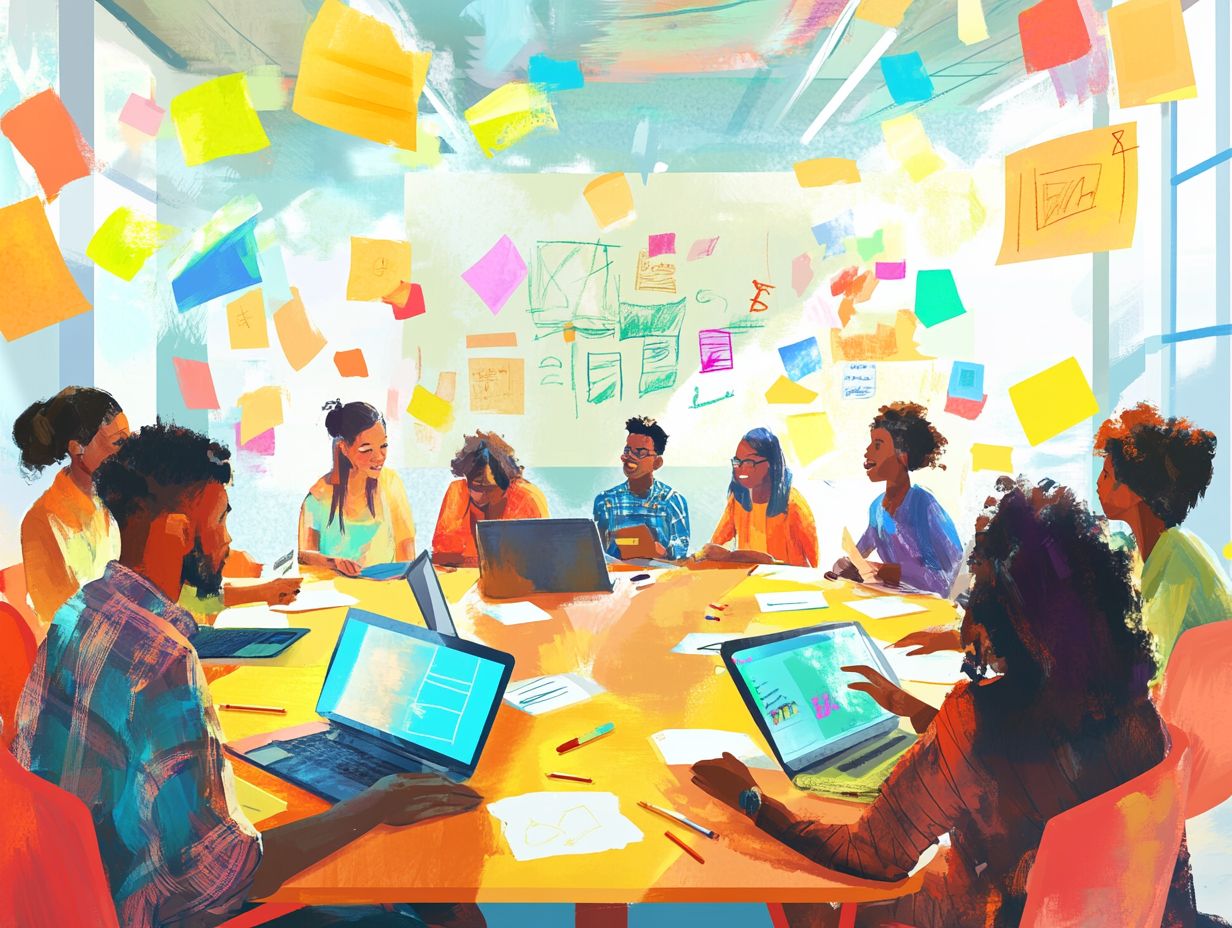
Fostering creativity in e-learning requires you to implement targeted strategies that engage your students. Consider incorporating interactive activities and project-based learning. These methods promote collaboration and offer valuable opportunities for students to explore and innovate.
By integrating these elements, you can create a dynamic learning environment that inspires creativity and critical thinking.
Incorporating Interactive Activities and Projects
Incorporating interactive activities and projects into your remote learning experience sparks creativity and fosters collaboration among students, allowing for deeper engagement with the material.
These activities can take various forms, such as virtual group projects where you and your peers tackle real-world challenges. This provides opportunities to apply theoretical knowledge in practical contexts. Creative challenges, like designing a multimedia presentation or conducting peer reviews, enhance teamwork and innovation. Gamified learning experiences can further elevate motivation as you work alongside others to solve puzzles or complete tasks.
Such approaches not only make learning enjoyable but also cultivate essential skills like communication and problem-solving, creating a vibrant collaborative environment that enriches the educational journey.
Encouraging Thinking of Many Different Ideas
Encouraging thinking of many different ideas is essential for fostering creativity. This opens doors to independent learning and builds a growth mindset, both vital for effective learning.
In an e-learning environment, techniques like posing open-ended questions ignite curiosity and invite deeper inquiry, leading to a rich array of ideas. Brainstorming sessions whether tackled solo or in collaborative forums further enhance this process by encouraging you to build on others’ thoughts.
Educational theories, such as Constructivism the idea that students learn best when they build their own knowledge champion these methods. By creating a safe space for experimentation and idea-sharing, you can cultivate an atmosphere that values creativity and sharpens critical thinking skills.
Promoting Collaboration and Experimentation
Promoting collaboration and experimentation in e-learning environments elevates creativity. It creates a space where you can explore ideas freely and harness digital tools for project-based learning.
Implement strategies like group discussions and structured peer feedback sessions. By facilitating open dialogues, you and your peers can share diverse perspectives and refine your ideas together.
Utilizing digital platforms, such as collaborative document editing and video conferencing tools, enhances these interactions, enabling seamless connections and real-time exchanges. Integrating platforms that encourage creative expression, like digital storytelling and multimedia presentations, gives you the power to experiment without the constraints of traditional methods.
This enriches your educational experience and fosters a vibrant sense of community among your peers.
Tools and Technologies for Enhancing Creativity
Harnessing tools and technologies to enhance creativity is vital in e-learning. These resources offer innovative pathways for student engagement and expression, allowing you to explore digital tools, multimedia resources, and gamification techniques in exciting ways.
Don t miss out on the chance to enhance creativity!
Utilizing Digital Tools and Platforms
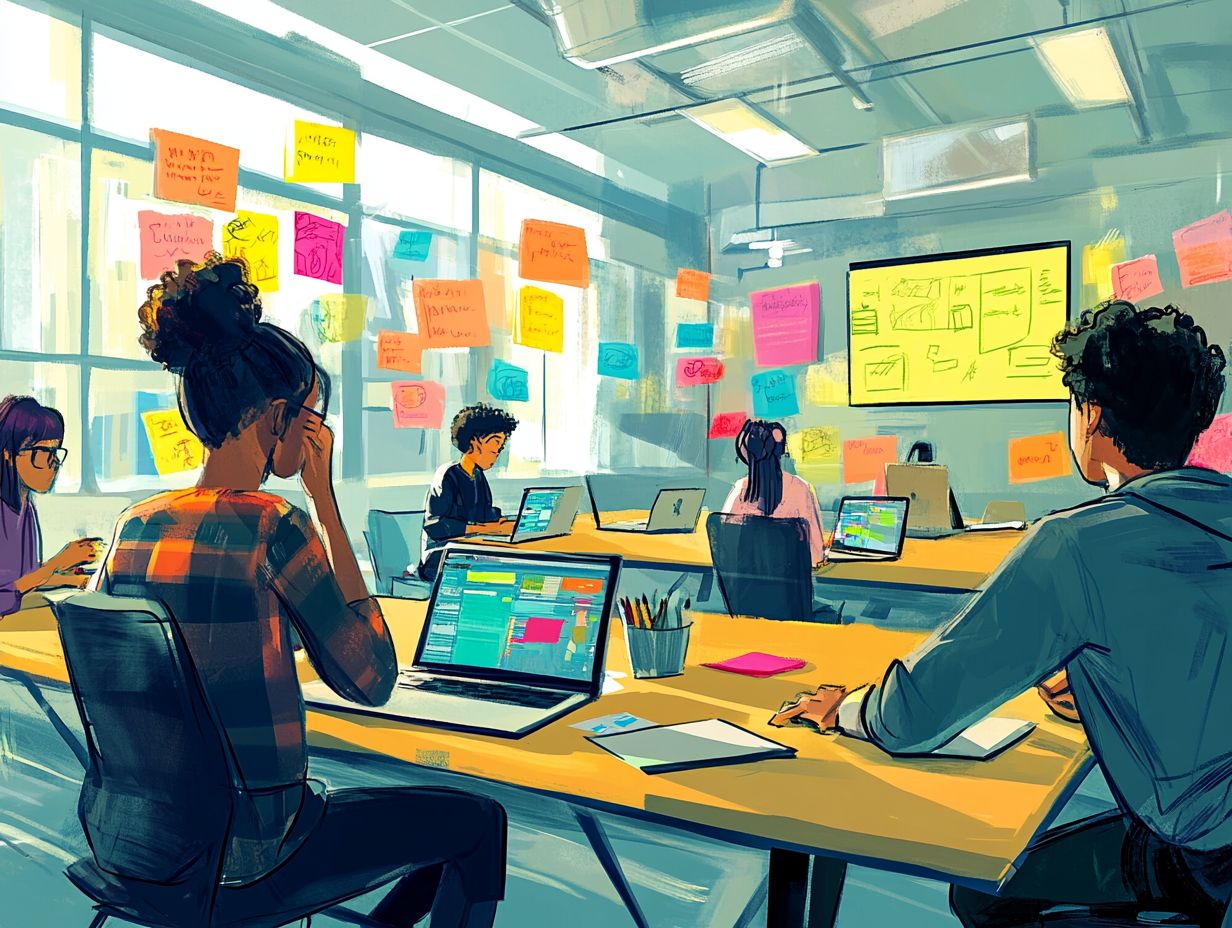
Using digital tools and platforms effectively can truly boost your creativity in remote learning environments. This allows you to collaborate and innovate with your peers.
Platforms like Miro and Padlet make brainstorming sessions easy and fun, enabling you and your group to share ideas in real-time and spark collective genius. You can also explore tools like Canva and Prezi to create visually captivating presentations that highlight your understanding of various topics.
Integrating Google Classroom and Microsoft Teams can streamline your communication and resource sharing, keeping you organized and motivated. By embracing these technologies, you can immerse yourself in an e-learning experience that not only fosters creativity but also enhances collaboration and improves your learning outcomes.
Incorporating Multimedia and Gamification
Incorporating multimedia and gamification into your e-learning approach can significantly enhance creativity. This makes the learning experience much more engaging and interactive for your students.
This strategy grabs their attention and fits various learning styles, resulting in a richer educational experience. Platforms that feature animated videos and interactive quizzes promote deeper understanding through visual and hands-on methods.
Gamification elements like point systems, badges, and leaderboards instill a sense of competition and achievement among learners. Consider classrooms that effectively use tools like Kahoot! and Nearpod; students become active participants, leading to better retention rates and an invigorated enthusiasm for learning.
Evaluating the Effectiveness of Creative E-Learning
Evaluating the effectiveness of creative e-learning is essential for understanding its impact on learning outcomes and student engagement. This requires you to implement strong ways to evaluate progress that accurately measure success.
Measuring Learning Outcomes and Engagement
Measuring learning outcomes and engagement in creative e-learning environments means embracing innovative assessment strategies that reflect the effectiveness of your methods.
You can use a variety of formative and summative assessment tools suited to your unique learning setting. For example, project-based assessments allow students to showcase their understanding through tangible outcomes, while peer evaluations provide insights into their collaborative skills and engagement levels.
Analytics tools can help track participation and interactions within the learning platform, revealing trends that guide your instructional adjustments. This mix of methods aligns with Constructivist theories, which focus on active learning and knowledge construction, while creating a dynamic feedback loop crucial for refining your educational practices.
Frequently Asked Questions
1. How can I foster creativity in e-learning environments?
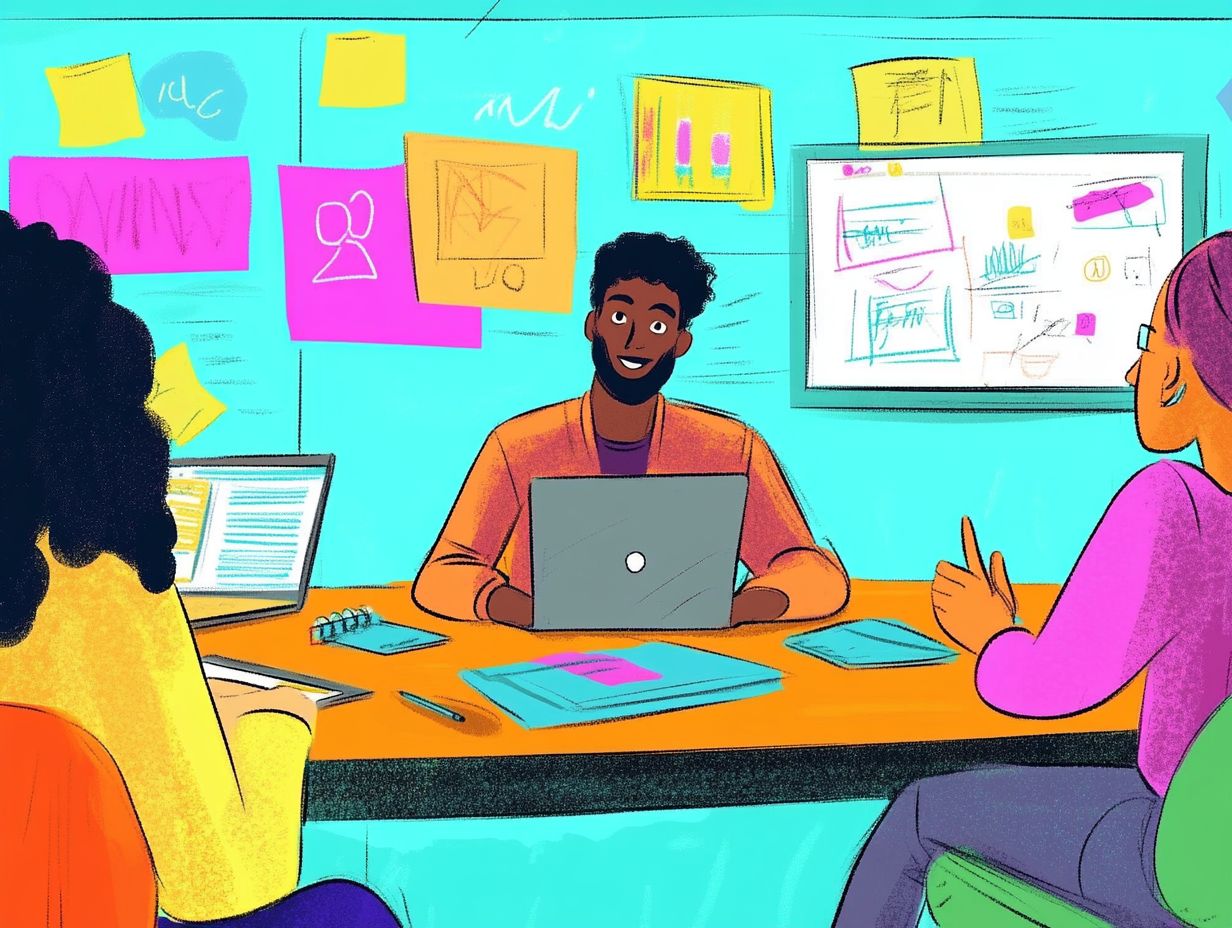
To foster creativity in e-learning environments, encourage students to think outside the box and explore different perspectives. Provide open-ended assignments and discussions, and incorporate multimedia and interactive elements into the course material.
2. What are some benefits of fostering creativity in e-learning environments?
Fostering creativity in e-learning can lead to increased engagement and motivation, improved critical thinking and problem-solving skills, and a deeper understanding and retention of the material.
3. How can I create a supportive environment for creativity in e-learning?
To foster creativity in e-learning, create a safe space for students. Encourage them to share their ideas and collaborate with each other.
4. How can I incorporate technology to foster creativity in e-learning environments?
Incorporate technology in various ways. Use virtual reality for immersive experiences and online tools for brainstorming. Allow students to express their ideas through different media formats like video, audio, and graphics.
5. What role do instructors play in fostering creativity in e-learning environments?
Instructors are key to nurturing creativity in e-learning. They should set clear expectations, provide guidance, and offer chances for students to showcase their creative work.
6. How can I assess and evaluate creativity in e-learning environments?
Assess creativity using rubrics that focus on originality and the process behind ideas. Encourage self-reflection, peer evaluation, and explanations of the creative thought process.

